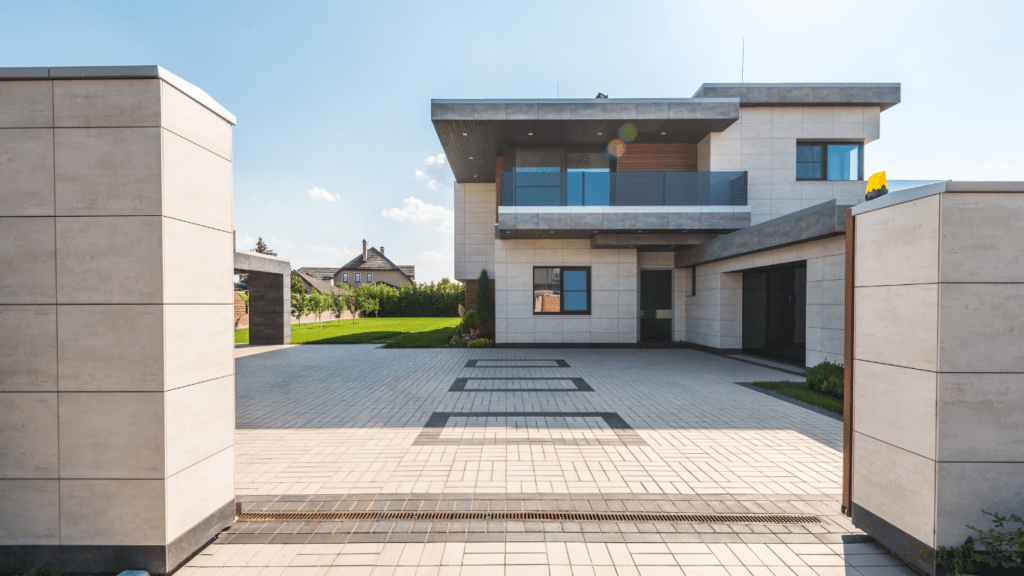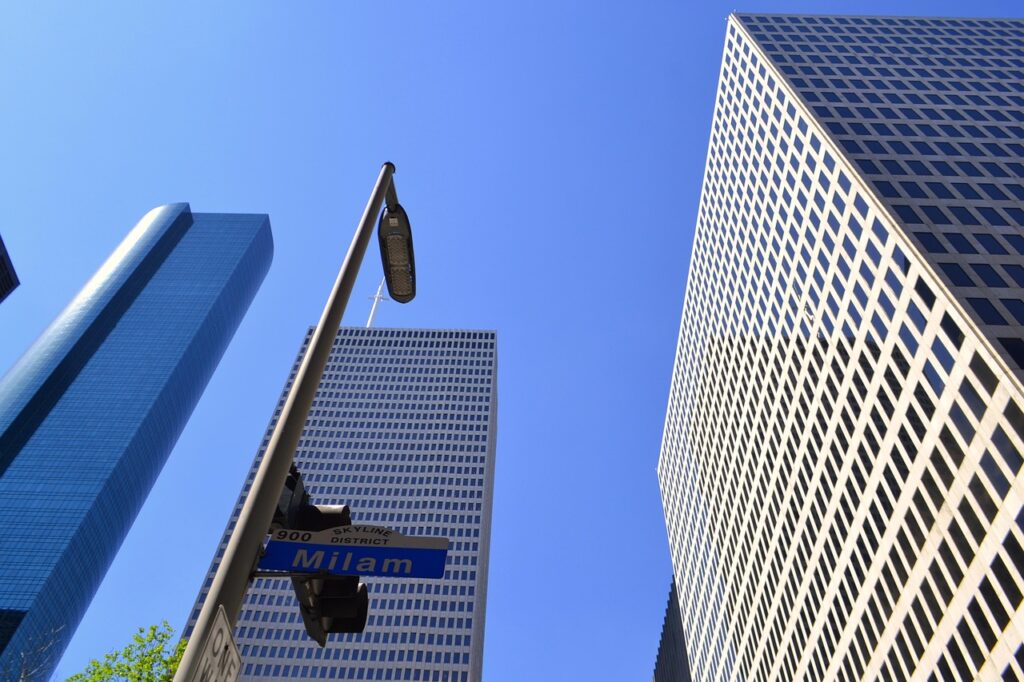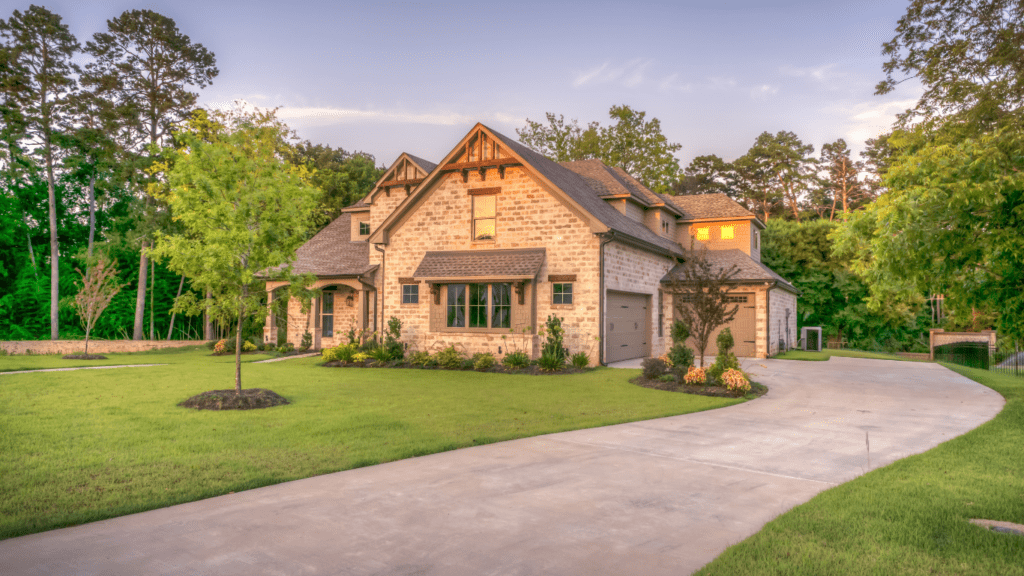Modern Minimalism
Modern Minimalism is a leading trend in luxury real estate due to its focus on simplicity and functionality. It emphasizes clean lines and open spaces, creating serene living environments.
Key Characteristics
- Open Floor Plans: Spaces flow seamlessly without barriers. For example, living rooms often blend into kitchens and dining areas.
- Neutral Color Palettes: Whites, beiges, and grays dominate, providing a calm background.
- Natural Light: Large windows maximize sunlight, reducing the need for artificial lighting.
- Sustainable Materials: Eco-friendly choices like bamboo, recycled metal, and reclaimed wood are common.
- Minimal Decor: Less is more, with furniture and decor kept to a minimum. Artwork and statement pieces often highlight key areas.
- Case Study House No. 22: Located in Los Angeles, it showcases expansive glass walls and unobtrusive structural elements.
- Villa Savoye: Designed by Le Corbusier in France, it uses pilotis for a floating effect.
- Farnsworth House: Mies van der Rohe’s creation in Illinois features floor-to-ceiling windows and a minimalist interior.
- Glass House by Philip Johnson: Situated in Connecticut, it integrates nature through transparent walls and minimalistic design.
Modern Minimalism connects tradition and innovation, creating luxurious yet practical living spaces.
Mediterranean Elegance

Mediterranean elegance captivates with its warm and inviting aesthetic. This architectural style, rooted in the coastal regions of Spain, Italy, and Greece, brings a timeless charm to luxury real estate.
Key Features
Mediterranean architecture combines stucco exteriors, red-tiled roofs, and wrought-iron details. Archways and columns enhance the regal ambiance, adding visual interest. Earth tones dominate the color palette, creating a harmonious blend with natural surroundings. Spacious courtyards and gardens provide outdoor living areas, embodying the Mediterranean lifestyle. Wooden beams and terracotta flooring offer rustic elements that balance luxury with comfort.
Iconic Properties
Villa Ephrussi de Rothschild, located on the French Riviera, exemplifies Mediterranean elegance with its grand terraces and lush gardens. Casa Casuarina in Miami, known as the Versace Mansion, showcases stucco walls and lavish interiors, adding a modern flair to the classic style. Hearst Castle in California, designed by Julia Morgan, features ornamental details and expansive courtyards, demonstrating the grandeur associated with Mediterranean architecture.
Classic Colonial
Classic Colonial architecture exudes timeless sophistication and grandeur. Popular in luxury real estate, it embodies historical elegance combined with modern amenities.
Distinctive Elements
Classic Colonial homes feature distinctive elements that set them apart. Symmetrical facades, characterized by a centered front door flanked by evenly spaced windows, create balanced aesthetics. Roofs often exhibit side gables or a gambrel style, enhancing the symmetrical appeal. Columned porches and entryways add a majestic touch, reflecting Georgian and Federal influences.
Interiors maintain traditional layouts, with rooms organized around a central hall. Hardwood floors, crown moldings, and wood paneling exude old-world charm. Fireplaces, often found in multiple rooms, serve as focal points, providing warmth and comfort. Exteriors generally use brick or wood siding, and classic color schemes—think white, beige, or muted tones—underscore the elegance.
Notable Homes
Several iconic homes exemplify Classic Colonial architecture. George Washington’s Mount Vernon in Virginia, a premier example, showcases the symmetrical design, columned porches, and expansive grounds typical of this style. The Longfellow House–Washington’s Headquarters in Massachusetts represents the Federal-style Colonial, emphasizing geometric simplicity and historic detailing.
Other notable properties include the Governor’s Palace in Williamsburg, Virginia, and Homewood House at Johns Hopkins University, Maryland. These estates illustrate the classic design elements and the lasting appeal of Colonial architecture in luxury real estate.
Classic Colonial architecture continues to dominate the luxury real estate scene, blending historical prestige with modern luxury features to create homes that stand the test of time.
Contemporary Chic
Contemporary Chic represents the future of luxury real estate, merging cutting-edge design with comfort. This style embodies modern aesthetics while prioritizing functionality and sustainability.
Design Principles
Contemporary Chic designs emphasize clean lines, open spaces, and a minimalist approach. Key elements include:
- Open Floor Plans: Maximizes space with integrated living, dining, and kitchen areas.
- Neutral Color Palettes: Soft whites, grays, and earth tones create a serene atmosphere.
- Large Windows: Full-height glass panels for natural light and outdoor views.
- Sustainable Materials: Eco-friendly materials like bamboo flooring and recycled metal are common.
- Smart Home Technology: Integrated systems for lighting, climate control, and security enhance convenience.
Leading Projects
Several projects exemplify Contemporary Chic in luxury real estate:
- The Edge House in Krakow, Poland: Designed by Mobius Architects, it features cantilevered structures and seamless indoor-outdoor transitions.
- C Desert House in California: This design by Studio Rick Joy highlights sustainable elements and minimalistic aesthetics.
- V60 House in Spain: Urbanarbolismo’s project showcases eco-friendly designs with extensive use of glass and open spaces.
- Villa K in Germany: Paul de Ruiter Architects focus on energy efficiency and modern design.
These projects blend function, style, and sustainability, setting a high standard in luxury real estate.
Sustainable Luxury
In the realm of luxury real estate, sustainability and eco-friendliness are becoming crucial elements. Discerning buyers now seek homes that offer both opulence and environmental responsibility.
Eco-Friendly Designs
Sustainable luxury often incorporates eco-friendly designs, utilizing materials that minimize environmental impact. Green roofs, solar panels, and reclaimed wood exemplify this approach. Homes with green roofs reduce energy consumption by providing natural insulation. Solar panels harness renewable energy, significantly cutting down on electricity costs.
Reclaimed wood presents a sustainable option for flooring and furnishings, lending a unique aesthetic while reducing deforestation. Additionally, rainwater harvesting systems enable properties to reduce water usage by collecting and storing rainwater for landscape irrigation. Examples of luxury homes with such features include the Edge House in Poland and the Desert House in California, showcasing how sustainable elements enhance both beauty and functionality.
Pioneering Homes
Pioneering homes represent the forefront of sustainable luxury, blending advanced technologies with green building practices. Smart thermostats, energy-efficient lighting, and LEED-certified designs characterize these residences. Smart thermostats adjust the heating and cooling based on occupancy patterns, enhancing energy savings.
Energy-efficient lighting, such as LED fixtures, reduces electricity consumption while providing superior illumination. LEED-certified homes meet stringent standards for sustainability, focusing on energy efficiency, water conservation, and indoor environmental quality. Notable pioneering homes include the V60 House in Spain and Villa K in Germany, both of which set benchmarks in eco-friendly opulence by integrating the latest advancements in sustainable architecture.
Luxury real estate now goes beyond mere aesthetics to embrace environmental consciousness, ensuring that opulence doesn’t come at the planet’s expense.



 Smart Home Technology Consultant
Meagan Kanedooray serves as Luxe House Maker’s smart home technology consultant, with extensive experience in integrating advanced tech into luxury homes. Specializing in home automation, security systems, and energy-efficient solutions, Meagan helps readers transform their living spaces into seamless, tech-enabled environments. Her expertise in cutting-edge technologies ensures that Luxe House Maker’s audience stays informed about the latest innovations that enhance convenience, safety, and sustainability in luxury living. Meagan’s deep understanding of smart home trends makes her an invaluable resource for those looking to elevate their homes with the latest advancements in technology.
Smart Home Technology Consultant
Meagan Kanedooray serves as Luxe House Maker’s smart home technology consultant, with extensive experience in integrating advanced tech into luxury homes. Specializing in home automation, security systems, and energy-efficient solutions, Meagan helps readers transform their living spaces into seamless, tech-enabled environments. Her expertise in cutting-edge technologies ensures that Luxe House Maker’s audience stays informed about the latest innovations that enhance convenience, safety, and sustainability in luxury living. Meagan’s deep understanding of smart home trends makes her an invaluable resource for those looking to elevate their homes with the latest advancements in technology.
